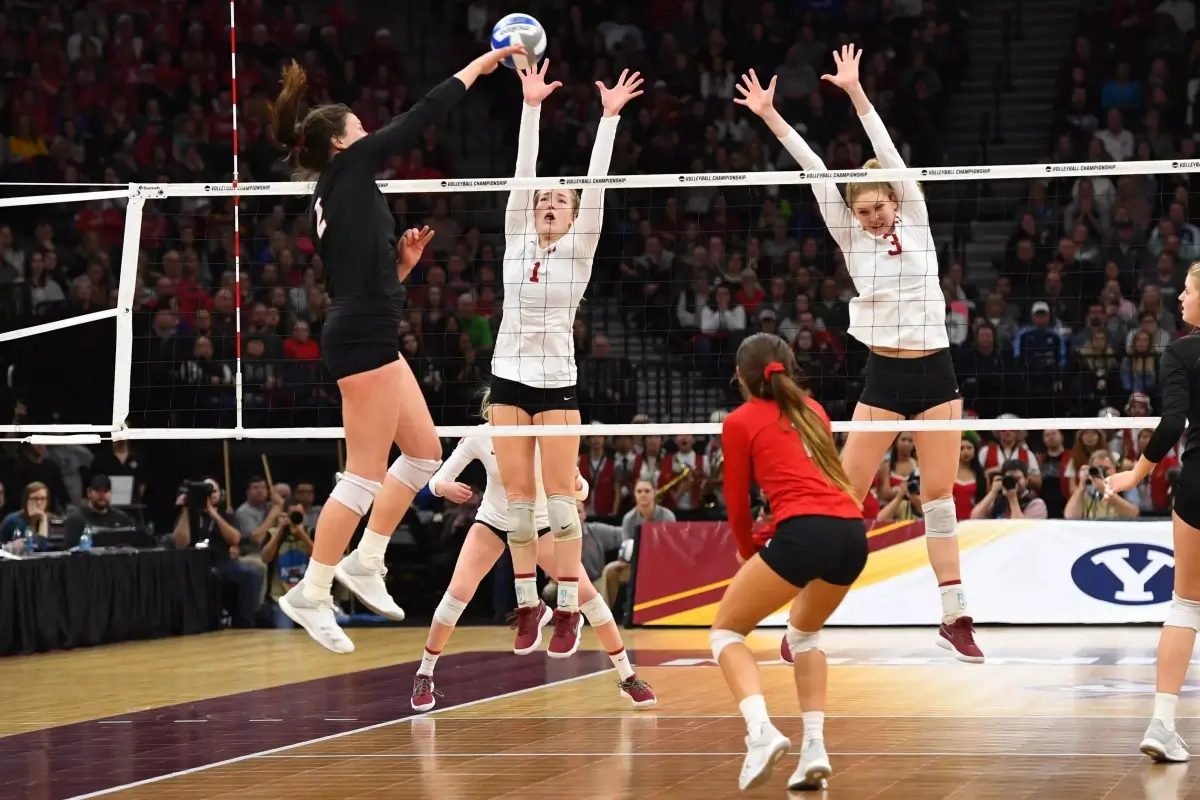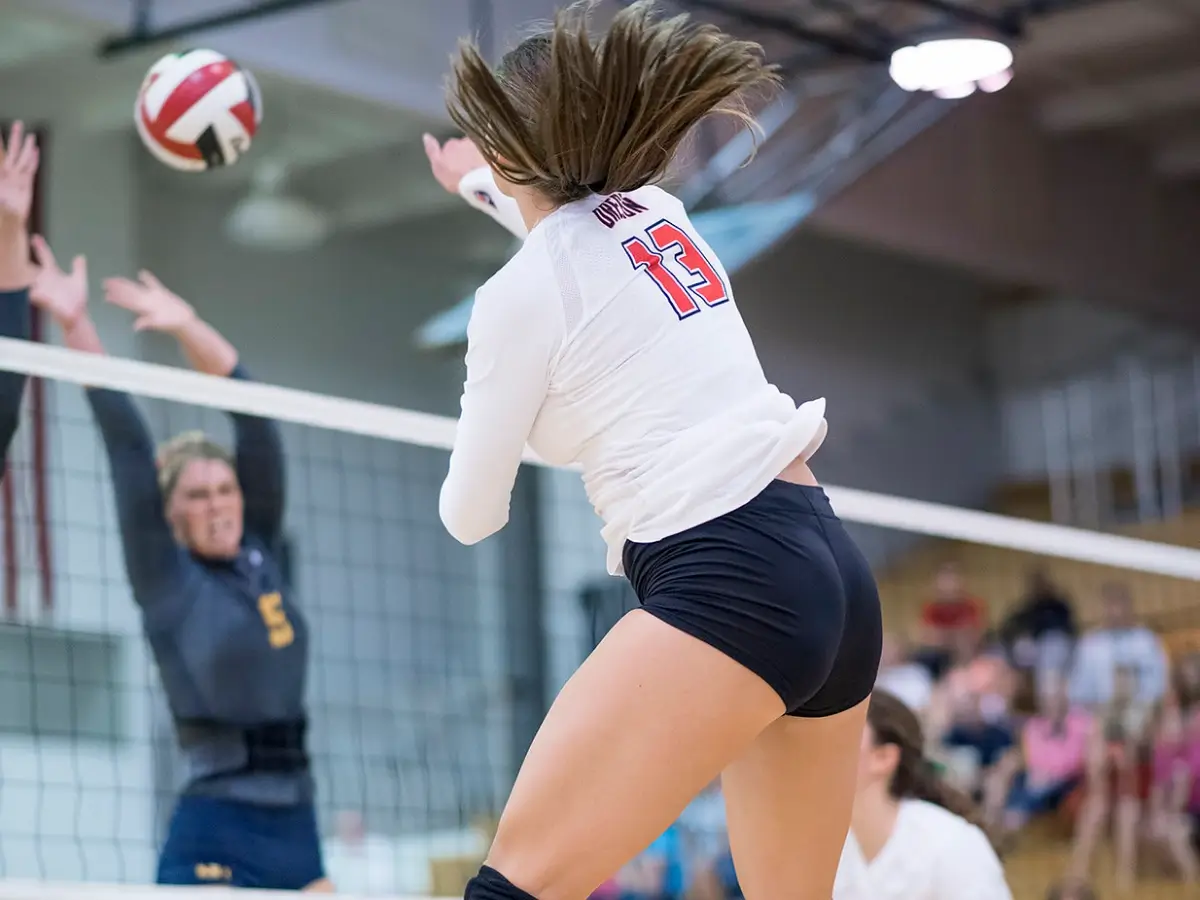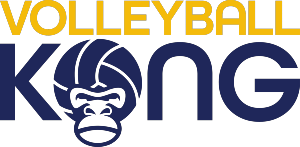Last Updated: January 12, 2024
In the dynamic and fast-paced world of volleyball, the role of the outside hitter stands out as one of the most challenging positions on the court. This position is not just about powerful spikes and spectacular digs; it’s a blend of athleticism, strategy, and mental toughness.
The outside hitter is often the team’s lead offensive player, responsible for scoring points and thwarting the opponent’s attacks.
This guide goes into the complexities of playing as an outside hitter, offering insights into the tactics, techniques, and mindset required to excel in this pivotal role.
Understanding the Outside Hitter Role

An outside hitter, often the team’s primary attacker, plays on the front-left side of the court. This position demands unique skills, including attacking from the strong side, serving reception, defense, and occasional setting. The outside hitter is pivotal in both offensive and defensive plays, making their role versatile and critical to the team’s success.
Key Responsibilities
The primary duties include spiking the ball with power and precision, receiving serves, and participating in blocks. An outside hitter also plays a significant role in court coverage and must be adept at reading the game to anticipate and counter the opponent’s strategies.
Positioning on the Court
The outside hitter transitions from the middle or right front positions to the left side post-serve. This strategic movement is essential for setting up attacks and preparing for blocks and digs.
Key Traits
Successful outside hitters often possess certain key traits:
- Height: While not always the tallest, their height allows them to spike over blocks and defend effectively at the net.
- Agility: Quick transitions between different roles, like blocking and digging, are essential.
- Power: Strength to hit the ball forcefully and accurately.
- Strong Eye Contact: Ability to read the game and anticipate opponents’ moves.
- Right-Handed Advantage: Beneficial but not mandatory; facilitates natural hitting motion.
- Speed: Quick reflexes to adapt to fast-changing game scenarios.
Developing Essential Skills
To thrive as an outside hitter, certain skills are indispensable. Here’s how to develop these skills:
Power Hitting
Techniques
Learn the proper arm swing and wrist snap to maximize power. Focus on your approach jump, using your legs to generate force.
Training Exercises
Plyometrics for leg strength, medicine ball throws for arm power, and targeted weight training can significantly enhance your hitting capability.
Agile Movement
Agility Drills
Ladder drills, cone drills, and short sprints improve quickness and agility. These exercises enhance your ability to transition rapidly between attacking and defending.
Tips
Practice multi-directional movements and quick footwork. Volleyball-specific agility drills that mimic game scenarios are particularly effective.
Precision Passing
Techniques
Focus on the fundamentals of forearm passing – bent knees, arms together, and a solid platform. Work on your ability to read serves and adjust your body position accordingly.
Drills
Regular practice with a serving machine or partner, focusing on different types of serves. This practice should include both forehand and overhand passing techniques.
Tactical Play for Outside Hitters

For an outside hitter to perform with excellence, he or she should be both mentally smart and physically skilled.
Positioning and Movement
Tactical playing is all about positioning yourself and moving the right way inside the court. An outside hitter should be able to know immediately the starting position and predict where to go next once the ball starts moving.
Once the ball is served, you should be able to tell in which direction the ball will be headed. Once you master this, you will be able to deliver powerful strikes and also switch easily between defensive and offensive roles.
When you are used to switching between completely different moves like defending, attacking, and blocking with ease and at lightning speed, you will become indispensable to your teammates and a challenge to your opponents.
Play Development and Communication
Play development and communication is another important element of strategic playing. Understanding and cooperating with your setter is very important. You should be able to understand their signs and choices. This balance will inevitably give you offenses that will catch your opponents off-guard.
You should also not forget the middle blockers because this is important in coming up with a formidable defensive plan.
Basically, the role of an outside hitter is to determine the counter team’s next moves and then plan to attack likewise. Practice this well if you want to block and prevent your opponents and be the best at both defense and offense.
Adaptability in Attack and Defense
Being a standout outside hitter requires adaptability, in both attack and defense. One must master the art of adjusting their hitting technique based on the quality of the set they receive. This entails being skilled at delivering hits when faced with less than ideal sets as well as developing a diverse range of shots such as line drives, cross court hits, tips and rolls. The ability to execute shots is paramount in overcoming various defensive formations.
An effective defensive strategy also includes blocking techniques. Improving timing and hand positioning can lead to blocks while coordinating with teammates for triple blocks significantly enhances the teams overall defensive prowess. By honing these aspects of play not only does one elevate their individual game but also contributes to the collective performance of the entire team.
Physical and Mental Conditioning
In order to excel as a hitter it is important to prioritize both fitness and mental strength.
Physical Training
Physical fitness extends beyond strength; it encompasses having the endurance required for peak performance throughout a match. Incorporating a combination of exercises into your training routine is vital for building stamina. Additionally incorporating strength training exercises helps improve core strength, leg power and upper body resilience.
You need to have these key attributes for executing explosive movements in spiking and blocking on the court. It’s also important to focus on jump training, which can be achieved through exercises like box jumps, squat jumps and skipping rope. These exercises improve your leap and contribute to your overall agility and power, enabling you to be an effective hitter and blocker.
Mental Toughness
Mental toughness plays a role in becoming a successful outside hitter as well. The ability to handle pressure is paramount. Incorporating stress management techniques into your training routine and simulating high pressure scenarios will help prepare you for the moments of a match. This mental preparation will enable you to make strategic decisions under stress, maintain focus during points in the game and bounce back from setbacks.
Furthermore developing game intelligence is equally essential. Analyzing game videos and gaining an understanding of strategies will enhance your ability to read the game accurately, anticipate opponents moves effectively and adapt your gameplay accordingly.
By learning from both successful and unsuccessful games athletes accumulate a wealth of experiences that can be utilized in future matches. This, combined with mental conditioning molds a well rounded player who can excel as an outside hitter.
Mastering Advanced Techniques
Attaining mastery in techniques as a hitter can significantly enhance your performance and give you a competitive advantage.
One such technique is effectively utilizing the block. This entails hitting the ball off the blockers hands to redirect it out of bounds resulting in a point for your team. It requires timing, angle awareness and the ability to analyze the positions of the blockers while capitalizing on any gaps or weaknesses within their formation.
Another advanced hitting technique involves diversifying your shots. This entails becoming proficient in hitting styles, such as executing off speed shots like roll shots and tips. These shots prioritize placement and deception instead of power. By altering the speed and trajectory of your hits you can keep the opposing defense, off balance and unsure of what to expect.
Timed shots, with a change of pace can be just as effective as spikes especially when the defense is anticipating a hard hit.
Adding side spins to your hits is another technique to consider. The unpredictable trajectory caused by side spins makes it harder for defenders to predict and react. Mastering the wrist action required for this technique can be particularly helpful when maneuvering around a block.
On the other hand, strategic blocking plays a significant role. It all begins with reading the opposing hitters. By observing their body language, approach and arm swing you can anticipate their hitting direction. This insight allows you to position yourself effectively and increases your chances of blocking their hits.
Timing and teamwork are also factors in blocking. Your ability to time your jumps in sync with the hitters approach and swing is vital. Coordinating with blockers is equally important since a coordinated block can cover more space on the net. This teamwork creates a barrier that limits the target area for opposing hitters.
Becoming proficient in these techniques takes time and commitment. It can greatly enhance your performance as an outside hitter.
Practical Tips and Drills
For outside hitters aiming to refine their skills, engaging in targeted drills and heeding practical advice from experienced coaches and players is invaluable. Here’s a deeper look into essential drills and tips for outside hitters.
Important Drills for Outside Hitters
Hitting Drills
To be good at hitting, you need to learn how to give different types of hits from different angles and at different speeds. Also, do not forget the pesky blockers. Have someone block you on the other side so that you can imitate a real playing experience. Be prepared both for perfect as well as faulty sets, because you just don’t know what waits for you in the next game.
Blocking Drills
You need to undergo both solo and team blocking drills. When training alone, concentrate on your footing as well as the timing at which you will block. Ask your coach to help you with this to imitate a real game experience. Team blocking is all about cooperation and communication. Work with the middle blockers. Make sure your moves are at the same or right time. Know what kind of moves each of your teammates makes.
Passing Drills
Passing drills is all about developing your forearm and overhand passing. Focus on a certain location and then try passing the ball. See if you are able to do it with precision.
Tips from Experienced Players and Coaches
Avoid Common Mistakes
Unless you are a beginner, making common mistakes is simply unforgivable. This means mastering the right footwork, communicating your hits, and being good at back-row defense. Most of the coaches will encourage players not to swing at every trigger but rather being smart about their response.
Continuous Improvement
Always be open to what your coaches and teammates tell you. Don’t be arrogant. Continue to practice your physical moves and learn to understand the game as much as possible. Whenever you are free, watch good games by top players. Study their strategy and talk about it as often as possible with your teammates or whoever shares an interest in the game.
Keep yourself updated with the latest techniques. Even the experts are always learning, and they never stop.
Conclusion
An outside hitter in a volleyball game is very important and calls for a lot of versatility. Their role calls for the person to be adept at all kinds of skills, and a lot of times, they are the deciding factor in the team’s performance.
Since they are the attacker as well as the communicator, they need to interact with the setter, which in turn makes them the prime strategy for the offensive. If you want to become an outside hitter, you should always practice and keep learning.
